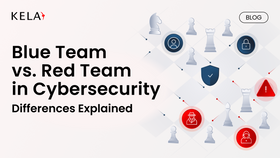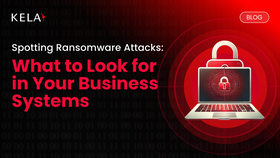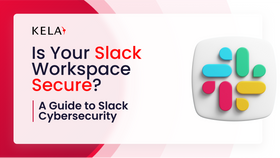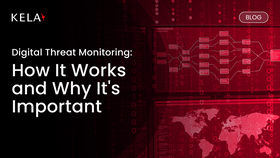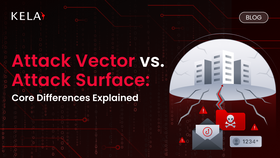What Are Indicators of Compromise (IOCs)? A Beginner's Guide
IOCs are pieces of forensic data like IP addresses, file hashes, or domain names that signal potential malicious activity in a system. This blog explains how IOCs are gathered and kept current to detect and respond to threats efficiently.
Published July 16, 2025
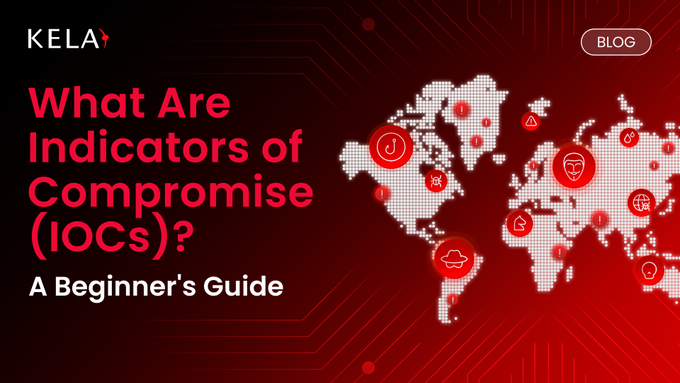
Detecting cyber threats early is more important than ever. According to the IBM Cost of a Data Breach Report, organizations that quickly identify breaches reduce costs by over $1 million on average compared to slower responders. This clearly shows how crucial Indicators of Compromise (IOC) are in cybersecurity. These clues help security teams spot signs of intrusion or malicious activity before damage escalates.
Understanding how to identify and apply IOCs effectively is a key part of modern defense strategies. This blog looks at what are Indicators of Compromise, why they matter in cybersecurity, and how they keep organizations prepared against advanced threats.
» Skip to the solution: Try KELA's cyber threat intelligence for free
What Are Indicators of Compromise?
Indicators of Compromise are forensic traces that signal a potential security breach or malicious activity within a system or network.
These artifacts—whether file-based, network-based, or behavioral help security professionals identify, investigate, and respond to threats.
Uses of IOCs After a Security Incident
- IOCs are used after a security incident to assess the extent of the compromise.
- They help security professionals recognize and trace known threats within the system.
- IOCs play a role in improving and refining the incident response process.
- They also support the development of stronger defensive strategies to prevent future attacks.
Indicators of Compromise vs. Indicators of Attack
| Aspect | Indicators of Compromise (IOCs) | Indicators of Attack (IOAs) |
|---|---|---|
| Purpose | IOCs help identify that a system or network has already been compromised. | IOAs help detect an attack as it is unfolding or before it causes damage. |
| Timing | IOCs are used after a threat has entered the system or during an ongoing breach. | IOAs are used in real-time to stop attacks before or while they happen. |
| Focus | They focus on specific evidence like file hashes, IPs, or domains linked to threats. | They focus on attacker behavior, such as unusual access or command patterns. |
| Use Case | IOCs support incident response and forensic investigations after detection. | IOAs support active defense and real-time threat prevention. |
| Detection Method | Detection relies on matching known threat signatures or historical attack data. | Detection relies on analyzing behavior and context, even without known threats. |
| Security Role | IOCs strengthen response planning and help document past security events. | IOAs strengthen proactive defense by flagging suspicious activity early. |
» Learn more: How scary is that data leak really?
The 2 Main Types of IOCs
IOCs can be grouped into two main categories: static and behavioral. Each type plays a unique role in helping security professionals detect, investigate, and respond to threats.
1. Static IOCs
Static IOCs are fixed data points that remain unchanged during an attack. They represent direct evidence of a compromise and are often matched against known threat intelligence databases. Static IOCs are highly effective for identifying previously known threats and malicious content.
What they indicate
They show exactly what happened during or after an attack such as a file that was dropped, an IP address that was contacted, or a domain that was resolved. These indicators help trace the attack's footprint.
Examples include:
- IP addresses
- Domain names
- Files hashes
- URLs
- Registry keys
» Here are the most targeted entry points by hackers
2. Behavioral (Dynamic) IOCs
Behavioral IOCs are based on suspicious or abnormal activity patterns observed within the system or network. Unlike static IOCs, these are not fixed values—they reflect how attackers operate rather than what tools they use.
What they indicate They highlight how an attacker is behaving during an intrusion, offering insight into intent and tactics. These indicators are useful for detecting unknown or evolving threats and often help spot malicious activity before damage occurs.
Examples include:
- Unusual outbound traffic
- Repeated failed login attempts
- Lateral movements between systems
- Large spikes in database reads
Take Note: While static IOCs are effective for detecting known threats, behavioral IOCs are essential for identifying unknown or evolving ones. A well-rounded detection strategy uses both: static indicators for quick filtering and blocking, and behavioral indicators for understanding intent and stopping threats earlier in their lifecycle.
» Make sure you understand how threat actors breach and exploit your data
How to Detect IOCs Across Environments
Detecting IOCs requires visibility across your entire digital ecosystem—from endpoints to cloud workloads and networks. Organizations depend on layered tools and processes to capture, analyze, and act on IOCs in real-time.
- Extended detection and response (XDR) collects data from multiple layers of email, endpoints, servers, and networks—and correlates it to identify suspicious behavior or known IOCs. It provides faster detection by combining alerts into a single incident view.
- Endpoint detection and response (EDR) tools monitor devices like laptops and servers continuously for file changes, registry edits, or suspicious processes matching IOCs or abnormal activity. EDR supports forensic investigations and automates response actions.
- Security information and event management (SIEM) platforms centralize logs and events from diverse sources. They match incoming data with known IOC signatures such as malicious IP addresses or unusual access patterns and trigger alerts. SIEMs also help with long-term IOC correlation and compliance.
- Threat intelligence platforms (TIPs) collect, enrich, and distribute IOC data within the security stack. By integrating external threat feeds with internal alerts, TIPs provide timely context on emerging threats.
» Make sure you understand the role of a threat intelligence analyst
How IOCs Support Timely Threat Mitigation
1. Collection and Validation
IOCs are gathered from sources such as internal logs, past incident reports, and security tool outputs. Once collected, the data is sorted to remove errors or duplicates. Cybersecurity analysts then validate each IOC by checking it against existing intelligence sources and known attack patterns. This step is crucial to ensure accuracy and reduce false positives.
2. Integration Into Security Workflows
After validation, IOCs are integrated into the organization’s existing cybersecurity stack. This includes feeding them into SIEMs, intrusion detection systems, firewalls, and endpoint protection platforms. When integrated properly, IOCs trigger automated alerts and blocking mechanisms. This helps security teams respond quickly.
These indicators also support forensic investigations and inform future risk reduction strategies.
3. Use During Incident Response
Security operations teams rely on IOCs to identify the scope of an attack and trace its origin. Real-time alerts tied to known indicators allow for faster isolation of affected systems and quicker containment. With IOCs built into incident response playbooks, organizations can detect, act, and recover more effectively.
» Concerned about the future? See these trends shaping the future of CTI
Best Practices for Managing and Applying IOCs Effectively
Proper management of IOCs is key to reducing false positives, accelerating incident response, and building stronger, threat-aware systems. Below are six best practices to ensure IOCs work for—not against—your security posture.
1. Monitor Continuously
Maintaining constant visibility across endpoints, networks, and cloud environments allows you to spot unusual behavior before it turns into a breach. Tools like SIEM and XDR solutions aggregate and analyze logs and alerts from multiple sources in real-time.
This makes it easier to connect the dots across isolated events and catch patterns early. Regular tuning of these tools ensures that your detection remains sharp as threats evolve.
2. Automate Wherever Possible
Manual IOC triage slows down your response and makes human error more likely. Using tools like EDR, SOAR, or threat detection platforms lets you handle IOC data faster and at scale.
Machine learning and behavioral analysis make it easier to spot unknown or hidden threats. Automation also keeps things consistent by applying the same rules every time, which helps reduce mistakes.
3. Audit Your Defenses Regularly
Frequent security audits are essential for keeping your detection rules aligned with your infrastructure and threat profile. These audits evaluate how well your systems are ingesting and responding to IOC feeds.
They also uncover gaps in logging, misconfigured tools, or legacy systems that may not support modern indicators. Simulated attacks or red team exercises during audits can further validate your response readiness.
» Make sure you understand the difference between blue teams and red teams in cybersecurity
4. Train Your People
Even with advanced tools, your users are often the first to encounter an attack vector. Employee training programs that focus on threat recognition, like phishing attempts, suspicious attachments, or unauthorized access requests strengthen your overall defense.
Regular awareness campaigns and simulated phishing tests keep security top-of-mind. A security-aware workforce can help flag incidents before automated tools are even triggered.
» Learn more: How to prevent phishing attacks
5. Retire Outdated IOCs
Not all IOCs remain useful over time—IP addresses change, malware signatures become obsolete, and attackers shift tactics. Outdated IOCs create unnecessary alerts and reduce trust in your detection tools.
Establish regular review cycles to remove expired or low-confidence indicators. This keeps your IOC lists lean, relevant, and actionable.
6. Share Threat Intelligence
Threats evolve fast and organizations that collaborate stay ahead. Sharing IOCs via Threat Intelligence Platforms allows you to benefit from collective insights across industries. These platforms enrich your IOC data with contextual details like attacker tactics and known infrastructure.
Did You Know? IOCs can help you find and stop threats much faster. Think of them as digital fingerprints that let security tools and analysts quickly spot suspicious activity. When organizations share IOCs, they help build a stronger, collective defense against cyberattacks.
» Check out these reasons why you need cyber threat intelligence
Strengthen Your Security With KELA's Cyber Threat Intelligence
KELA’s Cyber Threat Intelligence platform collects, analyzes, and shares critical Indicators of Compromise all in one place. This platform helps your organization detect cyber threats faster and respond more effectively. By integrating KELA into your IOC strategy, you gain access to up-to-date and enriched intelligence that improves how you make decisions and prevents attacks before they happen.
With timely and accurate IOC information, your security team can act proactively instead of reacting after an attack occurs. KELA transforms raw data into actionable insights. This helps you stay ahead of evolving cyber threats and it strengthens your overall security posture.
» Ready to get started? Contact us to learn more about our cyber threat intelligence services
Your IOC Questions Answered
What is an IOC?
An Indicator of Compromise is a specific piece of data like an IP address, file hash, or domain name that signals a potential security breach or malicious activity within a system
How often should IOCs be updated?
IOCs require constant updating because attackers change tactics to stay hidden. The update frequency depends on IOC type: network IOCs often need more frequent refreshes due to their short lifespan, while host-based IOCs may remain relevant longer but still need regular review to stay effective.
Can IOCs alone stop all cyber threats?
No. IOCs are essential but limited since attackers continuously evolve. Combining IOCs with analysis of adversary tactics, techniques, and procedures (TTPs) offers a more strategic and resilient defense.
What challenges exist when sharing IOCs between organizations?
Sharing IOCs improves collective defense but faces issues like data format inconsistency, trust, and privacy concerns. Using standard platforms and formats helps overcome these barriers for effective collaboration.

